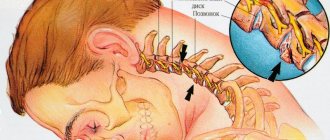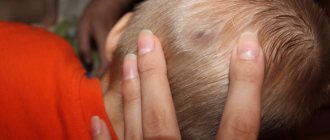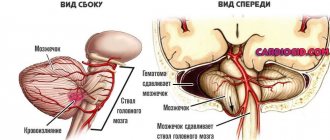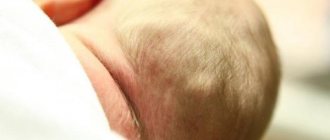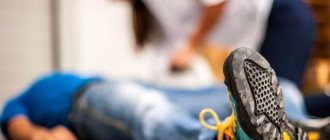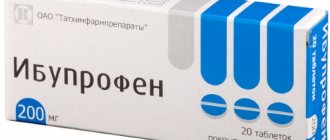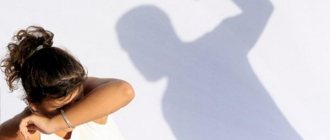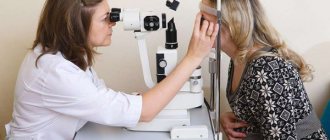If a bump forms on the head from the blow, this indicates that the injury was quite serious. After all, tissue swelling is a sign of damage to blood vessels. It often happens that the pain from a bruise has long passed, but the bump does not go away. Such swelling hurts when pressed and causes physical and mental discomfort to the person. How to get rid of a bump on your head yourself? And in what cases should you immediately go to the doctor? We will consider these questions in the article.
Why does a lump appear?
A bump on the head from a blow appears due to damage to small vessels. At its core, it is a type of hematoma. Upon impact, the capillaries rupture and blood flows out. When other parts of the body are bruised, a bruise appears on the skin, but there is usually no swelling. This is due to the fact that the subcutaneous tissue absorbs blood on the body and limbs. Therefore, swelling does not form.
There is no fiber on the head. Blood pours out under the skin. In this case, the liquid is not absorbed, but only accumulates. For this reason, a head injury leads to the appearance of a lump. This does not exclude the simultaneous formation of a bruise if the blow was strong enough.
Causes
A hematoma on the head does not occur with every bruise. In order for a lump to appear, a fairly rough mechanical effect on the skin is necessary. Swelling usually occurs as a result of the following injuries:
- Bumps on a child’s head from an impact are most often caused by falls. Small children often fall out of strollers. Such injuries also occur when a child learns to walk.
- Adults are more likely to get bumps when hitting hard surfaces. This happens with awkward movements or when an object falls on a person from above.
Symptoms
How to distinguish a hematoma from other types of edema and tumors? Bumps on the head from a blow have the following features:
- A hematoma always forms exclusively in the place that has been subjected to mechanical stress. For example, if a person hurts himself on the top of his head, the bump cannot appear in the frontal region.
- The size of the formation may vary. It depends on how severe the bruise was.
- The color of the cone may vary. Sometimes it does not differ from the rest of the skin color, but it may also be bluish due to hemorrhage. But in the head area there are no bruises of such a bright color as on other parts of the body.
- The skin around the lump looks swollen.
- When you press on the lump, pain is felt.
On average, swelling can last from 2 to 7 days. With intensive treatment and proper first aid, the lump goes away quite quickly.
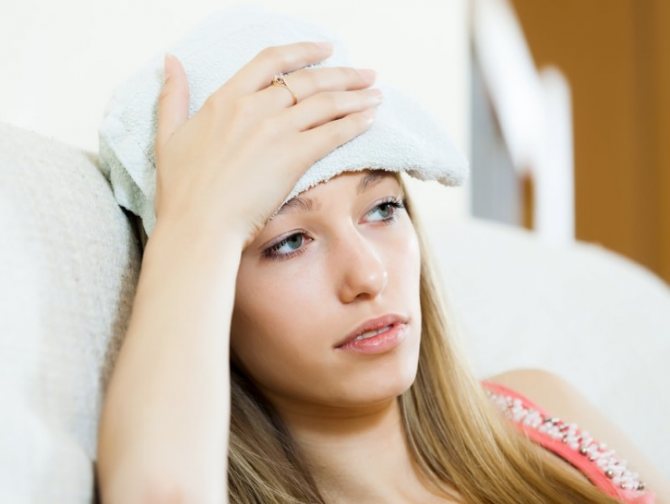
Treatment for head injuries
Damage caused by injury is identified using instrumental types of examination:
- radiography, excluding fractures of the skull bones and lesions of the brain;
- computed tomogram revealing a violation of the blood supply to brain tissue, their edema;
- in severe cases: cerebrospinal fluid puncture to assess changes in hematopoietic function.
There is no specific treatment for uncomplicated superficial hematoma. The patient is advised to limit physical activity for several days, not to engage in work that requires nervous and intellectual stress, and to rest more. To restore the vascular network and resolve swelling, you can use local bodyagi-based products and cooling ointments. To improve interstitial metabolism and stimulate brain function, take Glycine.
Therapy for a bruise of moderate and severe severity depends on the size and location of the hematoma, damage to nerve tissue, and the subsequent inflammatory process.
One of the most dangerous injuries is a head contusion - a violation of the integrity of the skin of the skull, accompanied by the formation of areas of tissue necrosis of varying degrees. This damage poses the greatest danger to children.
Features of bruises in children
A bump on the head after a blow in a child is a very common occurrence. After all, children love a mobile and active lifestyle. Babies have delicate scalp, so a hematoma can form even with a minor blow.
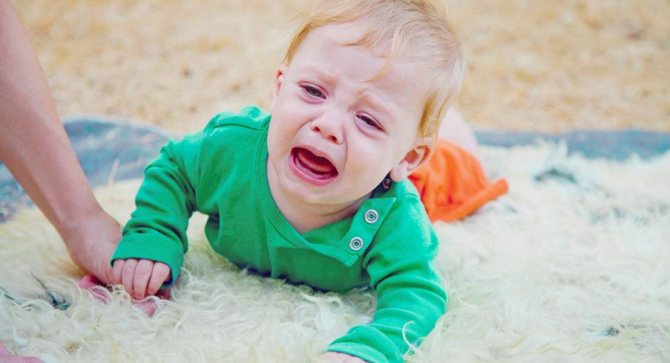
However, head injuries in children are often accompanied by concussion and other unpleasant consequences. Therefore, you need to pay attention to the baby’s well-being. Many children cry a lot when they are bruised, but most often this is due to fear rather than pain. You need to let the baby calm down, and then take a closer look at his condition. If you have the slightest doubt, you should contact a pediatric traumatologist.
The size of the hematoma does not always indicate the danger of injury. For example, with forehead bruises, huge bumps always form. However, the frontal bone is the strongest and protects the brain well, so unpleasant consequences from bruises in this area are rare.
Cold
Let's say that a child or adult has a bump on their head from a blow. What to do first? A few minutes after the injury, blood continues to flow from the burst vessels, and the lump grows. If the blow was very strong, then the swelling increases right before our eyes.
First of all, you need to stop the subcutaneous hemorrhage. To do this, apply cold to the damaged area. Its effect will help narrow blood vessels and reduce hematoma, as well as reduce pain. The following available tools are suitable for this purpose:
- Ice. If the injury occurred at home, you can take ice from the refrigerator, put it in a bag and wrap it in a towel. Apply an ice compress to the bruised area. This procedure must be repeated several times during the day. Instead of ice, you can use freezer items or a bottle of cold water.
- Compress with cold water. You need to moisten the cloth with cold water and apply it to the bump. As soon as the compress warms up, it must be replaced. This procedure is repeated several times.
- If you don’t have anything cold on hand, regular vegetable oil can help. It should be applied to cotton wool or a bandage and applied to the bruise for half an hour. With the help of such a folk remedy, you can completely avoid the appearance of a bump if the blow was not too strong.
Cold must be applied within the first 24 hours after injury.
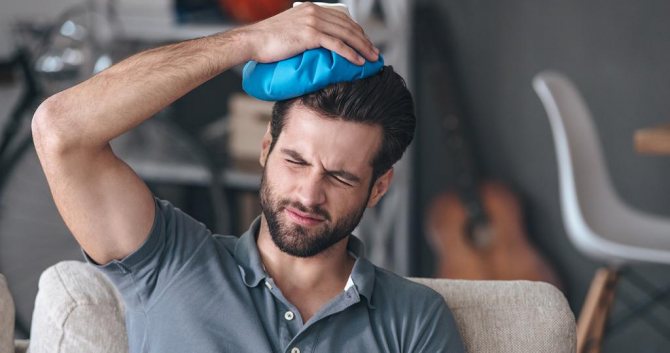
Head hit: symptoms, consequences, first aid
Having hit his head hard on a hard surface, a person feels sudden pain. It may not be felt for so long, but a bump on the head after a blow can cause serious discomfort for much longer. Proven methods of traditional medicine and effective medications will help relieve swelling and quickly get rid of unpleasant manifestations.
How a lump appears at the site of a bruise
Symptoms of bruises on different parts of the body may differ qualitatively. If the blow falls not on the head, but on another place, a bruise or hematoma will appear, but the surface of the skin itself will remain smooth. A lump forms on the head.
In general, when a bruise occurs, blood vessels are damaged and burst. Blood flows out of them. On all parts of the body except the head, it is absorbed into the subcutaneous layer of tissue, which leads to a characteristic change in the color of the skin in the bruised area and the appearance of a bruise.
This layer of fiber is almost absent on the head. There is nowhere for blood to be absorbed from the burst vessels. It flows directly into the space between the scalp and the bones of the skull. A lump appears on the head.
The more blood has accumulated at the site of the bruise, the larger the size of the lump.
Actions to reduce and remove the consequences of the impact
The first necessary actions after a bruise to prevent the growth of the lump. At the first stage, it is important to stop the flow of blood from the vessels. To do this, it is necessary to achieve their narrowing. And this needs to be done as quickly as possible. Therefore, first aid consists of providing cold exposure to the site of impact.
A suitable item may be a rag soaked in cold water. You should apply it for a few minutes until it warms up. As necessary, it is necessary to replace the lotion that has become warm with a cold one.
You can use what you have in the refrigerator. It could be ice. You can put it in a plastic bag. The bag should be wrapped in cloth and applied to the bruise. To prevent hypothermia, which can result in complications and illness, it is necessary to apply at intervals.
In addition to ice, there may be some frozen food products in the refrigerator, such as meat. It can also be placed in a bag, wrapped in a cloth or towel and applied to the bump. If you have a cold drink bottle, that can also come in handy.
However, cold objects may not be nearby. For example, the following situation may happen: a man hit his head, a lump appeared, what to do if applying cold is not possible?
In this case, vegetable oil can be of significant help. You need to thoroughly soak a piece of gauze or cotton wool with it and cover the bruised area for 30-35 minutes. The redness that appears after such a compress should go away, but the lump may not appear at all.
Further actions in case of injury
If for the first day the most correct and effective method is exposure to cold, then after this time, actions should be aimed at carefully warming up the impact site. Heat will help get rid of the swelling, relieve swelling, as a result of which the lump will resolve and disappear.
Heated salt retains heat for a long time. Wrapping it in a not very thick cloth, you need to keep the compress on the sore spot. A boiled egg will also remain warm for a long time and can be used for application.
Cabbage
It is an excellent remedy to help cope with swelling and bloating after an impact. First, its fresh leaves should be crushed. It is best to use a meat grinder for this.
The resulting mass should be placed in a small volume of milk and boiled a little. Then, you should take the cabbage out onto a napkin and apply the resulting warm healing compress to the bump for 1 hour.
Then the damaged area must be washed.
Thyme
This plant has healing and swelling properties. Its other name is creeping thyme. Its fresh leaves should be applied to the place where the bump is located on the head after a blow. It is believed that the healing plant even helps restore memory if its decoction is used to wipe the head.
Sagebrush
In a situation of bruise, the juice of the plant effectively helps. To obtain it, the grass should be thoroughly ground. The released juice must then be carefully applied to the bruised area.
Oak bark and daisy flowers
From these components you need to make a powder. Its amount should be equal to one tablespoon. Then you need to prepare a saturated composition by pouring a glass of boiling water over the powder. The solution must be infused for half an hour. A piece of cloth soaked in the resulting liquid is applied to the site of the injury and the consequences of the blow disappear faster.
Gel "Troxevasin"
The product strengthens capillaries and vascular walls, has an effect against swelling and emerging inflammation. The bump on the head is lubricated with gel in the morning and evening. In this case, the medicinal product is smoothly rubbed into the skin until absorbed.
Gel "Troxerutin"
Used to relieve swelling. Well absorbed through the top layer of skin. The product can only be applied if there are no open lesions or wounds. Places treated with gel should be protected from exposure to active sunlight.
Heparin ointment
The product promotes the resorption of blood clots and prevents the formation of new ones. Reduces pain. The ointment is applied in a thin layer in the morning, afternoon and evening until the symptoms of the bruise disappear.
Gel "Rescuer"
Promotes active cell growth and rapid restoration of injured skin. Has an antimicrobial effect. Quickly absorbed. Apply 1-2 times during the day. Apply a thin layer.
When to see a doctor if you have a head injury
If the symptoms of a bruise are only swelling of the lump and pain at the site of the impact, which gradually subsides, then it is not necessary to go to the hospital; it is enough to use the remedies described above. But sometimes the situation can be much more serious.
The injured person may experience not only a bump on the head from a blow, but also signs of a sharp deterioration in their condition as a result of a concussion, intracerebral bleeding, or a fracture of the skull.
Urgent medical assistance is absolutely necessary.
Signs of such particularly severe conditions of the injured person are
- The appearance of open wounds and bleeding from them, which does not stop for more than 10 minutes.
- Feeling of severe pain in the head and neck area.
- Increasing nature of pain.
- Simultaneously with severe pain, attacks of nausea are observed.
- Blood or other fluid is leaking from the ears and nose.
- Increase in body temperature to a value greater than 38 degrees.
- Speech impairment.
- There is a feeling that there is “floating” in the eyes; the pupils are of different sizes.
- Confused consciousness.
If these signs occur, the victim must be taken to the hospital as soon as possible, and until the ambulance arrives, the person should be ensured complete rest and closely monitor his breathing and consciousness.
A bump on the head from a blow may appear to a lesser extent or not appear at all. It all depends on how quickly the situation is assessed and the necessary actions are taken to improve the condition of the injured person.
Source: https://swedmed.ru/shishka/289-golova-udar-delat.html
Ointments
How to anoint a bump on the head from a blow after first aid? In pharmacies you can buy various local remedies for bruises. Let's look at some of them:
- “Troxerutin.” This is a drug in the form of a gel that helps resolve swelling after a bruise. The product is well absorbed into the skin, but it is not recommended to apply it to damaged epithelium. The treated sore spot should be protected from exposure to ultraviolet radiation.
- "Troxevasin". The gel strengthens the walls of damaged blood vessels and promotes their healing. It reduces swelling and relieves pain. The cone should be treated with gel in the morning and evening.
- "Rescuer". This gel stops the inflammatory reaction and heals the injured area of the skin. In addition, it has disinfectant properties.
- “Heparin ointment.” The product is intended to combat thrombosis. However, it is also effective for bumps on the head from a blow. The ointment acts as an anticoagulant and promotes the resorption of hematomas.
- "Lyoton 1000". This gel also has anticoagulant properties and dissolves blood mass under the skin after a bruise.
- “Mirralgin.” The product is a plant-based balm. It improves blood circulation in damaged tissues, relieves pain and swelling. This harmless herbal remedy is especially indicated for young children.
These medications must be used until the lump disappears completely. Treatment may take varying periods of time, depending on the severity of the injury.
Bump on the head from a blow: symptoms, consequences, first aid
If a bump forms on the head from the blow, this indicates that the injury was quite serious. After all, tissue swelling is a sign of damage to blood vessels.
It often happens that the pain from a bruise has long passed, but the bump does not go away. Such swelling hurts when pressed and causes physical and mental discomfort to the person.
How to get rid of a bump on your head yourself? And in what cases should you immediately go to the doctor? We will consider these questions in the article.
Why does a lump appear?
A bump on the head from a blow appears due to damage to small vessels. At its core, it is a type of hematoma. Upon impact, the capillaries rupture and blood flows out. When other parts of the body are bruised, a bruise appears on the skin, but there is usually no swelling. This is due to the fact that the subcutaneous tissue absorbs blood on the body and limbs. Therefore, swelling does not form.
There is no fiber on the head. Blood pours out under the skin. In this case, the liquid is not absorbed, but only accumulates. For this reason, a head injury leads to the appearance of a lump. This does not exclude the simultaneous formation of a bruise if the blow was strong enough.
Causes
A hematoma on the head does not occur with every bruise. In order for a lump to appear, a fairly rough mechanical effect on the skin is necessary. Swelling usually occurs as a result of the following injuries:
- Bumps on a child’s head from an impact are most often caused by falls. Small children often fall out of strollers. Such injuries also occur when a child learns to walk.
- Adults are more likely to get bumps when hitting hard surfaces. This happens with awkward movements or when an object falls on a person from above.
Symptoms
How to distinguish a hematoma from other types of edema and tumors? Bumps on the head from a blow have the following features:
- A hematoma always forms exclusively in the place that has been subjected to mechanical stress. For example, if a person hurts himself on the top of his head, the bump cannot appear in the frontal region.
- The size of the formation may vary. It depends on how severe the bruise was.
- The color of the cone may vary. Sometimes it does not differ from the rest of the skin color, but it may also be bluish due to hemorrhage. But in the head area there are no bruises of such a bright color as on other parts of the body.
- The skin around the lump looks swollen.
- When you press on the lump, pain is felt.
On average, swelling can last from 2 to 7 days. With intensive treatment and proper first aid, the lump goes away quite quickly.
Features of bruises in children
A bump on the head after a blow in a child is a very common occurrence. After all, children love a mobile and active lifestyle. Babies have delicate scalp, so a hematoma can form even with a minor blow.
However, head injuries in children are often accompanied by concussion and other unpleasant consequences. Therefore, you need to pay attention to the baby’s well-being. Many children cry a lot when they are bruised, but most often this is due to fear rather than pain. You need to let the baby calm down, and then take a closer look at his condition. If you have the slightest doubt, you should contact a pediatric traumatologist.
The size of the hematoma does not always indicate the danger of injury. For example, with forehead bruises, huge bumps always form. However, the frontal bone is the strongest and protects the brain well, so unpleasant consequences from bruises in this area are rare.
Cold
Let's say that a child or adult has a bump on their head from a blow. What to do first? A few minutes after the injury, blood continues to flow from the burst vessels, and the lump grows. If the blow was very strong, then the swelling increases right before our eyes.
First of all, you need to stop the subcutaneous hemorrhage. To do this, apply cold to the damaged area. Its effect will help narrow blood vessels and reduce hematoma, as well as reduce pain. The following available tools are suitable for this purpose:
- Ice. If the injury occurred at home, you can take ice from the refrigerator, put it in a bag and wrap it in a towel. Apply an ice compress to the bruised area. This procedure must be repeated several times during the day. Instead of ice, you can use freezer items or a bottle of cold water.
- Compress with cold water. You need to moisten the cloth with cold water and apply it to the bump. As soon as the compress warms up, it must be replaced. This procedure is repeated several times.
- If you don’t have anything cold on hand, regular vegetable oil can help. It should be applied to cotton wool or a bandage and applied to the bruise for half an hour. With the help of such a folk remedy, you can completely avoid the appearance of a bump if the blow was not too strong.
Cold must be applied within the first 24 hours after injury.
Exposure to heat
Cold is a first aid remedy for bumps on the head from a blow. How to treat the hematoma further? Many people limit themselves to only cold compresses on the first day. However, this is not enough. On the second day, the sore spot must be warmed up. Under the influence of heat, the swelling subsides and the lump begins to dissolve.
You can apply a warm boiled egg to the bruise. Table salt, heated in a frying pan and wrapped in a cloth, is also suitable. You should not use compresses that are too hot, so as not to burn your already injured skin.
In the following days, the lump is treated with pharmaceutical ointments or folk remedies.
Ointments
How to anoint a bump on the head from a blow after first aid? In pharmacies you can buy various local remedies for bruises. Let's look at some of them:
- “Troxerutin.” This is a drug in the form of a gel that helps resolve swelling after a bruise. The product is well absorbed into the skin, but it is not recommended to apply it to damaged epithelium. The treated sore spot should be protected from exposure to ultraviolet radiation.
- "Troxevasin". The gel strengthens the walls of damaged blood vessels and promotes their healing. It reduces swelling and relieves pain. The cone should be treated with gel in the morning and evening.
- "Rescuer". This gel stops the inflammatory reaction and heals the injured area of the skin. In addition, it has disinfectant properties.
- “Heparin ointment.” The product is intended to combat thrombosis. However, it is also effective for bumps on the head from a blow. The ointment acts as an anticoagulant and promotes the resorption of hematomas.
- "Lyoton 1000". This gel also has anticoagulant properties and dissolves blood mass under the skin after a bruise.
- “Mirralgin.” The product is a plant-based balm. It improves blood circulation in damaged tissues, relieves pain and swelling. This harmless herbal remedy is especially indicated for young children.
These medications must be used until the lump disappears completely. Treatment may take varying periods of time, depending on the severity of the injury.
Folk remedies
Bumps on the head from a blow can also be cured using folk remedies. Everyone knows the wound-healing properties of aloe and Kalanchoe juice. These plants can be used to make a compress that will help reduce tissue swelling. You need to take a leaf of the plant, remove the top layer from it, put it on the sore spot, and then cover it with film and cotton wool. The compress is kept for about 2-3 hours.
You can use regular cabbage leaves. They need to be crushed and boiled in milk. Then put the mixture on a napkin or cloth and apply it to the bruise. Keep the compress for about 1 hour. This remedy helps relieve swelling.
Bumps on the head from a blow in adults can be treated with a mixture of iodine and alcohol (1:1 proportions). This remedy is especially useful for swelling of a bluish and pinkish color, accompanied by severe subcutaneous hemorrhage.
Possible consequences
It should be remembered that a bump on the head from a blow is not always a harmless phenomenon. After all, the cranium contains the brain, many vessels and nerve nodes. Damage to these anatomical structures can lead to serious consequences:
- concussion;
- skull fracture;
- rupture of cerebral vessels.
It is important to remember that serious head injuries often lead to severe disruptions in the functioning of the central nervous system. Such pathologies often require long-term treatment. Therefore, everyone should know in what cases a lump can be dangerous.
It is necessary to consult a doctor if the bump on the head after the blow does not go away within a week. If swelling does not disappear for a long time, this may indicate trauma to the bone tissue.
Seek immediate medical attention if a child or adult experiences the following symptoms:
- pain in the head and neck area;
- dizziness;
- nausea and vomiting;
- blurred vision;
- strabismus;
- discharge of blood or clear fluid from the nose or ears;
- increase in pain syndrome;
- disorders of speech and consciousness;
- pain that increases when turning the head;
- seizures;
- bleeding from the wound that does not stop for more than 10–15 minutes.
These warning signs may indicate a severe head injury. It is necessary to put the patient to bed, call an ambulance and monitor his consciousness and breathing until the doctors arrive.
Is a lump always associated with a bruise?
A soft bump after a head hit is not dangerous if there are no signs of trauma to the brain or bones of the skull. It is important to remember that a hematoma from a bruise never has a solid structure. If the lump looks like a lump, it is most likely not related to an impact.
Very often, people associate tumors on the head with the fact that they accidentally hurt themselves. However, such bumps may have a completely different origin.
The following formations may occur in the forehead and scalp area:
- Atheromas (wen). They look like balls filled with greasy contents. Festering wen can be painful.
- Hemangioma. This tumor of blood vessels is very similar to a lump after a bruise. However, such a neoplasm has a more intense color than a regular hematoma.
- Fibroma. The tumor consists of connective tissue and is benign. With trauma, malignant degeneration is possible.
- Lymphadenitis. In children, lymph nodes often become enlarged due to inflammation and infections. They look like red, painful bumps. They are usually located on the back of the head or behind the ears.
The appearance of a bump on the head should not be associated solely with the blow. Many of the above tumors require surgical removal. Therefore, if you are not sure that the lump is caused by a bruise, then you need to consult a specialist. Only a doctor can determine the exact cause of the tumor.
Source: https://FB.ru/article/400661/shishka-na-golove-ot-udara-simptomyi-posledstviya-pervaya-pomosch
Folk remedies
Bumps on the head from a blow can also be cured using folk remedies. Everyone knows the wound-healing properties of aloe and Kalanchoe juice. These plants can be used to make a compress that will help reduce tissue swelling. You need to take a leaf of the plant, remove the top layer from it, put it on the sore spot, and then cover it with film and cotton wool. The compress is kept for about 2-3 hours.
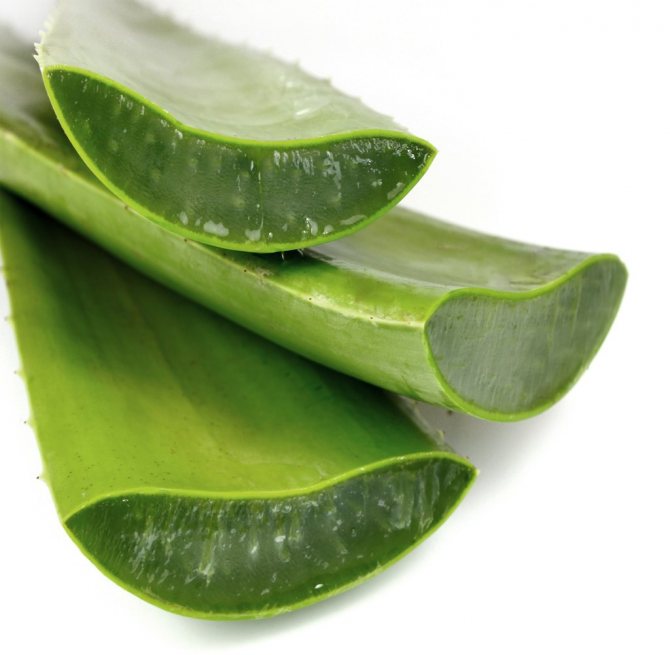
You can use regular cabbage leaves. They need to be crushed and boiled in milk. Then put the mixture on a napkin or cloth and apply it to the bruise. Keep the compress for about 1 hour. This remedy helps relieve swelling.
Bumps on the head from a blow in adults can be treated with a mixture of iodine and alcohol (1:1 proportions). This remedy is especially useful for swelling of a bluish and pinkish color, accompanied by severe subcutaneous hemorrhage.
Possible consequences
It should be remembered that a bump on the head from a blow is not always a harmless phenomenon. After all, the cranium contains the brain, many vessels and nerve nodes. Damage to these anatomical structures can lead to serious consequences:
- concussion;
- skull fracture;
- rupture of cerebral vessels.
It is important to remember that serious head injuries often lead to severe disruptions in the functioning of the central nervous system. Such pathologies often require long-term treatment. Therefore, everyone should know in what cases a lump can be dangerous.
Diagnostic methods
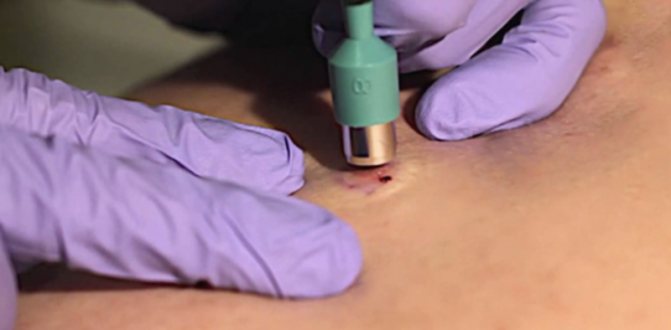
For numerous tumors, a biopsy is performed
After collecting a medical history and examining the problem area, the therapist or dermatologist refers the patient to blood and urine tests, which makes it possible to identify the presence of an inflammatory process in the body. It is also suggested to do:
- tumor marker test;
- X-ray of the skull and ENT organs;
- Ultrasound, MRI of the head.
If numerous lumps appear in the scalp area, a tissue biopsy is performed to identify cancer cells. Treatment measures and further actions depend entirely on the diagnostic results.
When a doctor's help is needed
It is necessary to consult a doctor if the bump on the head after the blow does not go away within a week. If swelling does not disappear for a long time, this may indicate trauma to the bone tissue.
Seek immediate medical attention if a child or adult experiences the following symptoms:
- pain in the head and neck area;
- dizziness;
- nausea and vomiting;
- blurred vision;
- strabismus;
- discharge of blood or clear fluid from the nose or ears;
- increase in pain syndrome;
- disorders of speech and consciousness;
- pain that increases when turning the head;
- seizures;
- bleeding from the wound that does not stop for more than 10–15 minutes.

These warning signs may indicate a severe head injury. It is necessary to put the patient to bed, call an ambulance and monitor his consciousness and breathing until the doctors arrive.
After the blow there is a lump on the temple
The temporal region is the most vulnerable part of the head. A blow to the temple can have serious consequences, ranging from concussion to death. Many nerve endings pass through this area and lead to other areas of the head, such as the eye sockets. In addition, the temporal bone is quite fragile, so it can break upon impact.
Also in the temporal region passes the temporal artery. A small blow is enough to cause a fracture of the bone plate, as well as a rupture of the artery, which is the most significant of all those that feed the dura mater of the brain.
https://www..com/watch?v=ytaboutru
Why is a blow to the temple dangerous? Trauma can lead to the following consequences:
- Paralysis of limbs.
- Aneurysm.
- Bleeding in the brain.
- Epilepsy.
- Concussion.
- Loss of vision.
- Death.
Thus, the anatomical structure of the human head, in particular the temporal region, suggests the development of health and life-threatening consequences when it is injured. Therefore, the answer to the question of why a person dies from a blow to the temple is obvious.
Symptoms and signs
The consequences of damage to the temporal region may not appear immediately. The first symptoms sometimes appear after two or three days. A person feels a headache, which can be easily relieved with painkillers.
But sometimes it can get worse, the medications stop helping, and tinnitus appears.
Over time, the pain is strongly felt in the temporal region, problems arise in the functionality of the neck, bruises appear under the eyes, vision and speech are impaired.
https://www.youtube.com/watch?v=DU7TN06fR2k
The following signs should alert you:
- Prolonged headaches that do not go away for three days.
- Inability to eliminate pain with medications.
- Noise in ears.
- Impaired coordination of movements.
- Visual impairment.
- Photophobia.
- The appearance of convulsions, hallucinations.
If immediately after a blow to the temple the consequences begin to appear, you need to urgently call an ambulance.
First aid
Adult concussion symptoms and treatment are closely related. The doctor will tell you about this in detail. But before the ambulance arrives, it is necessary to provide first aid to the victim.
First of all, cold is applied to the affected area if the injury is closed. If there is bleeding, apply a gauze pad to the wound and carefully bandage the head. Do not touch or remove bone fragments that protrude from the wound.
We suggest that you familiarize yourself with the Norm of leukocytes in the blood of an infant
Treatment for loss of consciousness should begin with the person being placed on their side to prevent them from choking on vomit if they vomit.
The head and shoulders must be positioned so that they are slightly higher than the body. It is recommended to fix them.
It is necessary to check the person’s pulse and breathing; if they are absent, resuscitation measures must be carried out: artificial respiration, cardiac massage.
If the victim is conscious, he should not move until paramedics arrive. The person needs to be calmed down. The victim is transported to the clinic in a supine position.
Diagnostic measures
Even with a light blow to the temple, the consequences can be unpredictable. Therefore, it is recommended to undergo examination by such specialists as a therapist, neurologist, or surgeon. Self-medication is strictly prohibited.
The doctor must eliminate the risk of developing dangerous injuries. For this purpose the following is carried out:
- X-ray of the head bones.
- CT or MRI of the brain (the price may vary slightly in different clinics) to exclude internal bleeding and hematoma, identify changes in the brain, and diagnose complications.
The doctor also conducts a study of vision and hearing, tactile sensations, coordination of movements, balance, and reflexes.
In some cases, the doctor may send the victim home under the supervision of relatives.
Relatives should monitor the patient throughout the day, and they should periodically awaken the victim in order to determine whether he wakes up normally.
Adult concussion symptoms and treatment are interrelated. If unpleasant symptoms occur or worsen, hospitalization is required.
While under home observation, the patient must remain in bed, avoid overexertion and physical activity, and do not strain the eyesight.
Therapy
An MRI of the brain (the average price is two thousand rubles) will give an accurate picture of the disease. Depending on this, the doctor will develop a treatment regimen that will focus on:
- To improve metabolic processes in the brain.
- Strengthening vascular walls.
- Prevention of cerebral edema.
- Restoration of blood circulation.
- Relief of pain syndrome.
At the clinic, doctors will eliminate not the symptoms of the pathology, but its causes. Therefore, in case of injuries to the temporal region, it is recommended to remain in a medical facility for treatment. In severe cases, surgery may be required. In some cases, intracranial hematoma is drained.
In the absence of bleeding, conservative treatment is resorted to. The doctor may prescribe sedatives, painkillers, diuretics, muscle relaxants, and analgesics. Antibacterial and antiepileptic drugs are sometimes prescribed.
Is a lump always associated with a bruise?
A soft bump after a head hit is not dangerous if there are no signs of trauma to the brain or bones of the skull. It is important to remember that a hematoma from a bruise never has a solid structure. If the lump looks like a lump, it is most likely not related to an impact.
Very often, people associate tumors on the head with the fact that they accidentally hurt themselves. However, such bumps may have a completely different origin.
The following formations may occur in the forehead and scalp area:
- Atheromas (wen). They look like balls filled with greasy contents. Festering wen can be painful.
- Hemangioma. This tumor of blood vessels is very similar to a lump after a bruise. However, such a neoplasm has a more intense color than a regular hematoma.
- Fibroma. The tumor consists of connective tissue and is benign. With trauma, malignant degeneration is possible.
- Lymphadenitis. In children, lymph nodes often become enlarged due to inflammation and infections. They look like red, painful bumps. They are usually located on the back of the head or behind the ears.
The appearance of a bump on the head should not be associated solely with the blow. Many of the above tumors require surgical removal. Therefore, if you are not sure that the lump is caused by a bruise, then you need to consult a specialist. Only a doctor can determine the exact cause of the tumor.
Lump on temple after blow
Have you been trying to heal your JOINTS for many years?
Head of the Institute for Joint Treatment: “You will be amazed at how easy it is to heal your joints by taking every day...
Read more "
People are often embarrassed to say see a doctor for illnesses below the belt. However, this does not make such ailments any less dangerous and does not create fewer problems for their owners. It’s just that a patient comes to a specialist with an already advanced stage of the disease, when treatment becomes more difficult. One of these problems is a bump on the tailbone.
Functions of the coccyx
The human spine ends at the coccyx, a pyramid-shaped section consisting of four to five vertebrae. Functions of the coccyx:
- it serves as a fulcrum in a sitting position;
- strengthening the muscles that regulate the functioning of the genitourinary system, intestines, buttocks;
- load distribution.
What causes a lump?
A lump on the tailbone is a dense, painful formation, about a centimeter in diameter. It may not bother a person for a long time, but at some point, for example, during physical activity, it begins to hurt and can fester. Most people do not pay attention to the bump until pain in the tailbone appears and cause it to get worse.
OUR READERS RECOMMEND!
Our readers successfully use SustaLife to treat joints. Seeing how popular this product is, we decided to bring it to your attention. Read more here...
The lump is a consequence of the inflammatory process, which, in turn, occurs due to injury or a cyst on the tailbone. Moreover, it does not form immediately; it can take up to several years between the injury and the formation of a lump.
Injuries to the tailbone are rare, but can occur if you fall on a flat surface with your buttocks. After such a blow, you can notice that a hematoma has appeared on the tailbone. In more serious cases, there may even be a crack in one or more vertebrae.
A hematoma on the coccyx is dangerous when it does not resolve and its tissues turn fibrous and encapsulate. In this case, the first danger is that the lump begins to compress the spinal cord.
A crack in the coccyx and injuries to surrounding tissues threaten abscesses and diseases of the spine.
A cyst is a benign formation that is a tissue compaction. The cause of a cyst may be:
- inflammation and suppuration of the hair follicle;
- crack in bone tissue;
- congenital epithelial coccygeal tract.
In advanced cases, the lump may fester. In this case, urgent surgical intervention is necessary, as the process can lead to blood poisoning.
Symptoms of a lump on the tailbone
For a long time, the bump on the tailbone may not hurt and not show itself in any way. During this period, people usually do not go to the doctor. And if they do this, they perceive the bump as a cosmetic defect (this is especially true for women), and not as a threat to their health. This is a big mistake, because the sooner it is detected and treated, the easier it will be to do.
Painful sensations are temporary at first, so not everyone can encourage them to go to the doctor. Pain may occur:
- with prolonged sitting or standing;
- After sleep;
- due to physical exertion;
- during pregnancy.
And finally, if the lump hurts constantly, it usually means that suppuration has already begun.
Diagnosis and treatment
To diagnose a lump that has appeared, an x-ray is used, which shows its presence or absence and location. To clarify the structure of the lump and get a more complete picture, ultrasound and magnetic resonance imaging are used.
If the lump is caused by a bruise, you will need to stay in bed and take painkillers prescribed by your doctor. If there is a fracture, the tailbone will need to be realigned.
A lump caused by a cyst requires excision - that is, surgery. Modern technologies make it possible to do this not only with a scalpel, but also with the radio wave method.
If suppuration occurs, you will also need to clean the area where the lump was and send the material for laboratory testing.
So, if you notice that some kind of swelling has appeared on your tailbone, consult a doctor immediately, even if it does not hurt or cause discomfort.
The hematoma can still resolve on its own, but in other cases the condition of the lump will only worsen. Despite the somewhat intimate nature of the problem, you should not be led by false shyness.
A lump on the tailbone is one of those problems that only gets worse over time and that practically cannot be treated on your own - consult a specialist!
How many times, when a person hits his elbow on some obstacle, simply rubs the bruised area and forgets about what happened. Often, due to such reasons, a “bump” forms on the elbow joint.
For a long time it may not bother its owner, but then suddenly it begins to grow, causing severe pain to the person.
Let's look in this article at the possible cause of this “bump” on the elbow - hygroma of the elbow.
What it is?
This tumor is called hygroma of the elbow joint. The neoplasm has nothing to do with cancerous tumors and contains inside a capsule filled with liquid mixed with fibrin or blood.
There are many types of hygromas. You can learn about the causes and how this disease is treated.
The disease is dangerous because rapid tumor growth and compression of nerve endings are possible. As a result, the functionality of the joint is completely impaired. The person experiences severe pain, cannot move his arm or dress himself.
Sometimes hygroma compresses the blood vessels in the joint cavity, which leads to their rupture and bleeding. In rare cases, the cyst can rupture on its own, and then the liquid contained in the capsule enters the connective tissue. This is dangerous due to the inflammatory process, especially if the contents of the cyst contain pus.
Hygroma often causes more serious inflammation of the joints, such as bursitis (inflammation of the tendon bursa) and tenosynovitis (inflammation of the tendon sheath).
Medicine cannot really explain why one person develops hygromas, while another never develops this disease. Among the factors influencing tumor formation are:
- hereditary - the disease is often transmitted from one generation to another;
- inflammatory - often, along with the ongoing inflammatory process in the joint, the growth of hygroma begins;
- traumatic - as a result of hitting the elbow on a hard surface, neoplasms often appear;
- professional - there is a high chance of cyst formation in people whose occupation involves stress on the joints. Typically, drivers, seamstresses, and PC operators suffer from this disease.
Young children are often susceptible to hygromas. Due to his mobility, the child constantly receives various injuries and sprains. Children who are actively involved in sports also suffer from this disease. A cyst is not a dangerous disease in a child; it occurs and is treated in the same way as in adults.
Hygroma can develop slowly over quite a long time and not manifest itself in any way. Often a person does not pay serious attention to the “bump” that has formed on the elbow until the tumor begins to grow rapidly and cause unbearable pain.
In this video you will learn more about the disease and its treatment.
Traditional methods
Many people suffering from this disease turn to alternative medicine for help. The treatment is based on the use of only natural and herbal ingredients. In many cases, such methods help, and hygromas actually disappear.
Method number 1. Celandine:
- It is necessary to steam the elbow affected by hygroma in hot water.
- The sore spot is lubricated with fresh celandine juice, squeezed from the plant, a cotton cloth is placed on top and bandaged thoroughly.
- Keep the compress throughout the night.
- The course of treatment is about 20 days.
Method number 2. Honey and cabbage:
- Coat a fresh cabbage leaf with honey and apply to the cyst.
- Wrap with cling film and wrap the joint with a warm cloth.
- After some time, the cabbage leaves are replaced with fresh ones.
- To achieve better results, traditional healers advise drinking freshly squeezed cabbage juice 2 times a day.
- You need to drink it before eating.
Method number 3. Lilac:
- Lilac flowers (about half a glass) are poured with boiling water (0.5 l) and simmered over low heat for about 5 minutes.
- Then turn off the heat, leave the broth for 30 minutes, then cool and strain thoroughly.
- While the broth is still warm, moisten a piece of gauze or bandage in it, apply it to the hygroma, wrap it in cling film and a warm cloth.
- Leave the compress on for 3 hours.
- This method is used up to 3 times a day for 20 days.
Method number 4. Golden mustache:
The golden mustache plant has a healing effect:
- It is necessary to squeeze the juice from its leaves.
- Apply it to the affected elbow.
- Place a fresh leaf of the plant on top.
- Wrap the compress well.
Method No. 5. Egg, vinegar and turpentine:
OUR READERS RECOMMEND!
Our readers successfully use SustaLife to treat joints. Seeing how popular this product is, we decided to bring it to your attention. Read more here...
There is an old way to get rid of the disease:
- It is necessary to pour 1/2 cup of wine vinegar into a fresh chicken egg.
- The egg is placed in a cool and dark place. Soon, the eggshell dissolves and the egg remains in its own film.
- The egg must be carefully removed from the vinegar, a small puncture is made in the film and the yolk is carefully poured into a container prepared in advance.
- Using a whisk, you need to thoroughly beat the yolk, then mix it with the remaining vinegar and sediment from the dissolved shell.
- Then add turpentine (100 ml) to the resulting mixture, stir well, pour into a dark glass container and put in the refrigerator.
- The product is used as a compress on a sore elbow.
If the hygroma bursts
In rare cases, spontaneous opening of the cyst occurs, and fluid from the tumor capsule spreads over the surrounding tissues or pours out. This happens mainly by injuring the diseased joint and is usually accompanied by acute pain. In this case, urgent assistance from a specialist is needed.
The doctor will disinfect the wound (if the skin over the hygroma is cracked) and administer the necessary antibiotics to prevent the development of infections. If urgent measures are not taken in time, at the site of the burst hygroma, after a certain period of time, a new tumor may appear, sometimes even more than one.
Hygroma is a disease that is easily treatable; the main thing is to recognize the presence of a tumor formation in time and begin to fight it in a timely manner. In no case should you postpone treatment “for later” due to the lack of pain, otherwise the cyst will acquire a rather impressive size, and the development of more serious joint diseases is also possible.
Source: https://porozova.ru/simptomy/shishka-na-viske-posle-udara/
